You'll go through a lot of trouble once your well or any of the pipes freeze. Unfortunately, this is a common scenario in the winter. If you find the process of insulating a well including its components complicated, we'll tell you based on our research how it is done.
To insulate a well, you'll need methods that will keep the pump, pipes, and the rest of its components warm even if the temperature reaches 32 degrees Fahrenheit. These methods include:
- Building a well house
- Using insulation covers or blankets
- Using pipe heating cables and foam tubes
- Using a heat lamp
- Allowing a faucet to drip
Not all wells are created equal. What might work for others might now work for your well. We already anticipated this and so we kept in mind different scenarios to make sure we don't miss your needs. Here's everything you need to know to properly insulate every component of a well.
![Borehole with water supply system. Water borehole, hydraulic accumulator, filter, water well, water pump for house, How To Insulate A Well [Inc. Head, Pump, Pit And Line]](https://hvacseer.com/wp-content/uploads/2022/06/1How-To-Insulate-A-Well-Inc.-Head-Pump-Pit-And-Line.png)
Well Insulation 101
During the early days when the dug well was the most common type, insulation was not much of a problem. Its straightforward design allowed insulation to be as easy as covering the pit with a thick blanket. Some people even used hay. There were no pumps and pipes to worry about.
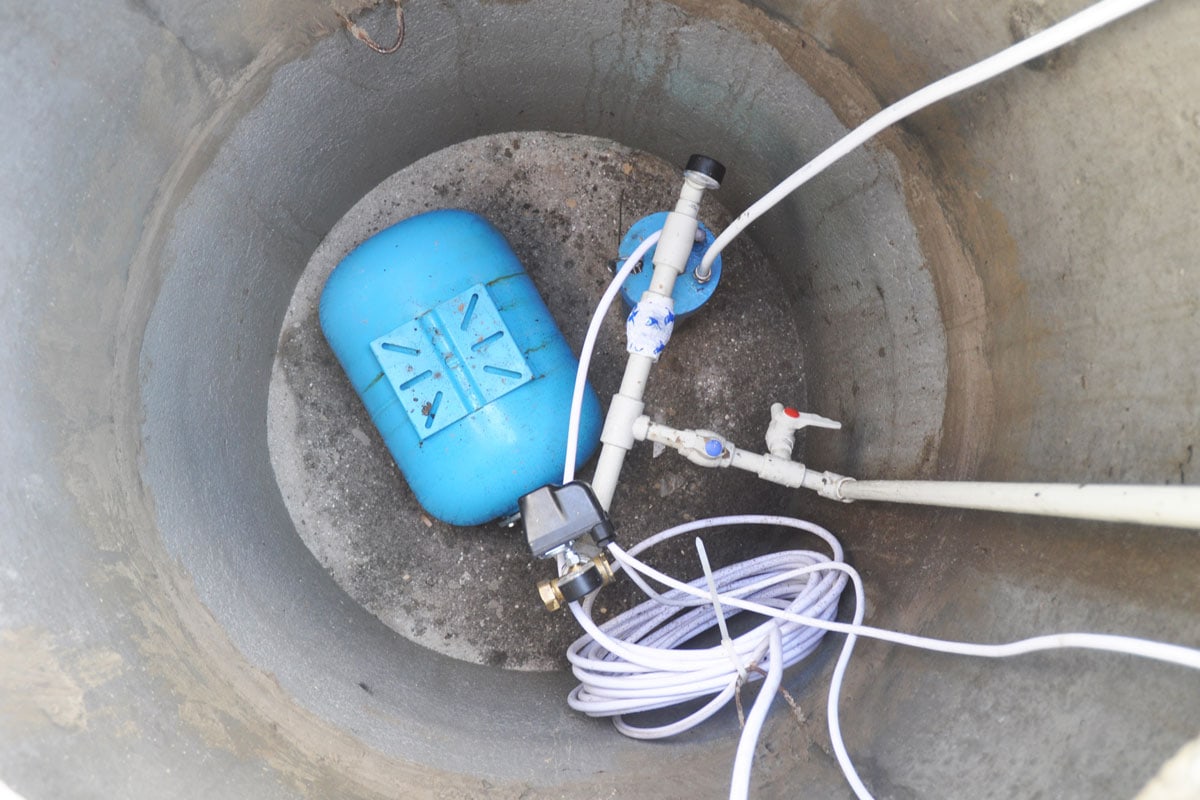
Now that the drilled well is more common in households, insulation for some people is problematic. This is truer when you don't have a well house. You should take every part into consideration.
It wouldn't make much difference when your well is in the basement. Basements are often deprived of heating. It would not be a lot of help for your well equipment when the temperature is almost as cold as outside. If possible, seal and insulate your basement. Read this related article: "Should You Seal Your Basement Wall? [And How To]."
Your well including the pipes may freeze as soon as the temperature drops to 32 degrees Fahrenheit for at least 6 hours. If you don't insulate immediately and the temperature does not get warmer, then you could wake up the following day with frozen pipes and well equipment. But no worries! Insulating a well is easy!
Building a Well House
Whether you have just set up a well or already have one outside, one of the best ways to insulate is to set up a well house. This should house your pressure tank, the well cap, and the initial pipes that lead to the house.
Keep in mind, however, that building a well house might not be enough to keep your equipment inside from freezing. You need to insulate the walls and the roof. The best insulation to use is fiberglass, although you can also use any insulation material available.
While it is true that insulation helps contain heat, this may not happen when the walls leak. The holes allow warm air to escape and cold air to come in even though there is enough insulation. Thus, it is harder to maintain the temperature at a more ideal level.
Make sure to spot and cover the holes on the walls and roof before installing insulation. You can use silicone sealant or caulking tapes to seal leaks.
A well house does not really need expensive materials. Look at the simple well house in this video and how it's properly sealed and insulated:
Using Insulation Covers and Blankets
There may be instances when the pump, well cap, and pressure tank sit just outside the house without any protection. Even if they are installed down the basement, sometimes warm air from the living space does not reach this area. If you feel they have a tendency to freeze at any time, consider using an insulation cover or blanket.
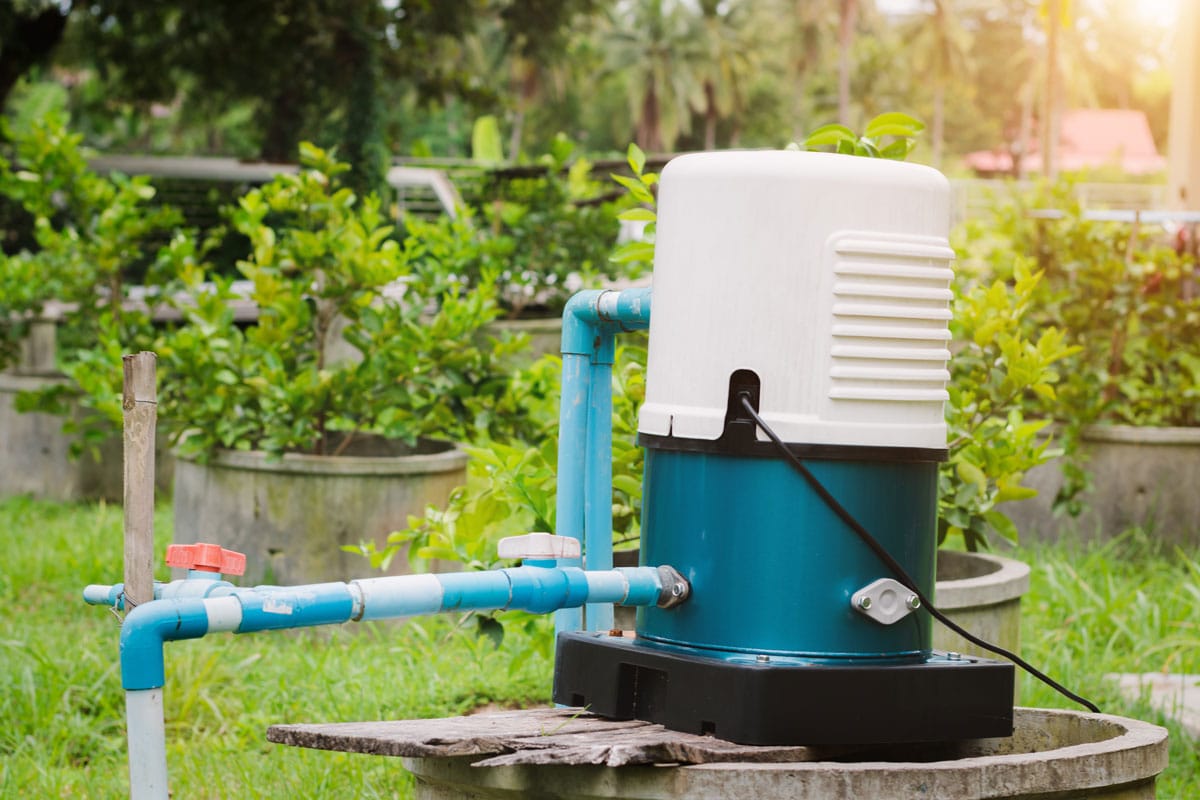
An insulation cover is made of layers of insulation materials. It is waterproof and sometimes, even heat-resistant. Using an insulation cover for your pump and well cap will give protection against freezing It traps the heat inside, ensuring these components remain warm and work as smoothly as possible.
An insulation cover is now available on the market in different designs and sizes. Below is an example of a modern insulation cover that you can also use year-round to hide a well cap or the well head from plain sight.
Check out this Aquascape faux stomp cover on Amazon.
The pressure tank is a larger piece of equipment that may not fit inside an insulation cover. To insulate a pressure tank, use an insulation blanket instead. You may use multiple layers of insulation materials or use an old blanket under an insulation material.
Using Heating Cables and Foam Tubes
Frozen pipes may mean hours of not having a water supply. If you don't thaw them immediately and the temperature is at a constant freezing point or below, the pipes may even burst. This is because ice takes up more space than when it is in its liquid state.
Pipes installed in the basement or indoor spaces without heating as well as those laid outside the house closest to the ground have higher chances of bursting. Aside from these, pipes that are small in diameter tend to freeze faster.
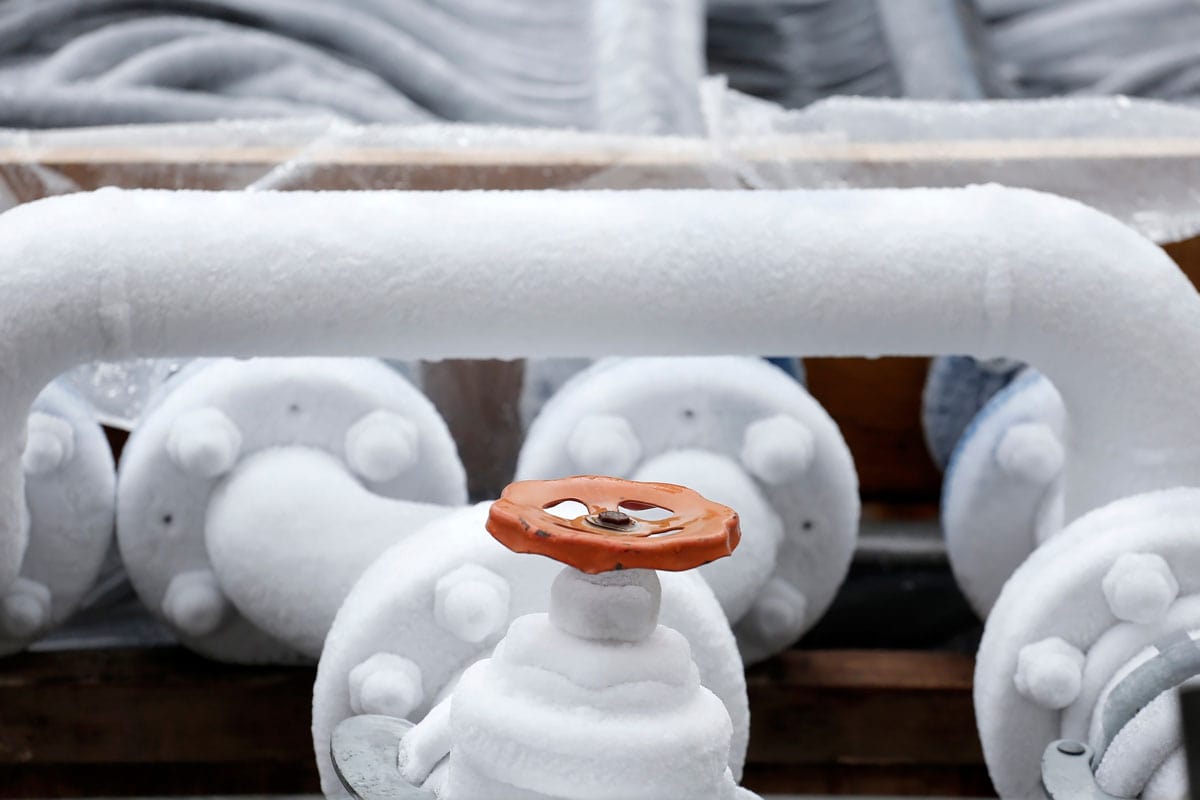
Foam Tubes
Cell foam tubes use either polyethylene or polystyrene foam, but you can also find foam tubes made of rubber. It usually comes in 6 feet lengths but shorter lengths are also available. The diameter for these tubes varies, too, so get the correct measurement of your pipes before buying.
You might be confused between a closed and an open-cell foam if this is your first time using them. This should not be a big deal as you can simply slit the sides of closed-cell foam to make it an open-cell foam.
Click here to view this foam pipe insulation on Amazon.
To insulate, make sure to cover all exposed parts of the pipe with a foam tube. Use a zip tie at least in between 6-inch gaps to lock in place.
Heating Cables
You can use heating cables before covering the pipes with foam tubes. Simply wrap them around the water pipes before locking them in place with zip ties. Then, plug them into a power source.
Heating cables can go as long as 125 feet. Some products have a built-in thermostat while others switch on and off automatically. Heating cables are generally waterproof and safe to use.
For more ways to insulate pipes in the crawlspace, you can check out this post: "How To Insulate Pipes In A Crawl Space."
Using Heat Lamps
Heat lamps are light bulbs that also produce heat. The amount of heat they produce varies on the wattage of the bulb. Heat lamps are very useful in spaces that do not have access to a heat source.
You can install a heat lamp in the basement or in your well house to warm your pressure tank, well cap, and pipes. Position the bulb as close to your equipment as possible. If not, install a number of bulbs if every component sits far away from each other.
Allowing a Faucet to Drip
When the advantages outweigh the disadvantages, it is probably acceptable to allow a faucet to drip. This is a popular trick during the winter when pipes tend to freeze a lot.
Let a small amount of water drip continuously to keep the movement within the pipes. You can use this trick when water consumption at home is too low, such as at bedtime or when everyone is going out.
How Do You Insulate a Well Pit?
Most public health codes prohibit the use of well pits now and recommend upgrading existing well pits to drilled wells. If you still need to insulate a well pit, you can use an insulation blanket or layers of old blankets and a plastic sheet over the top. You may also install heat lamps around the upper area of the well casing before covering it up with an insulation blanket.
Today, wells have a well head covered with a cap. This is the most visible part of modern wells. This is easier to insulate since you only need a small insulation cover to do the job.
Do You Need to Insulate a Well Pump?
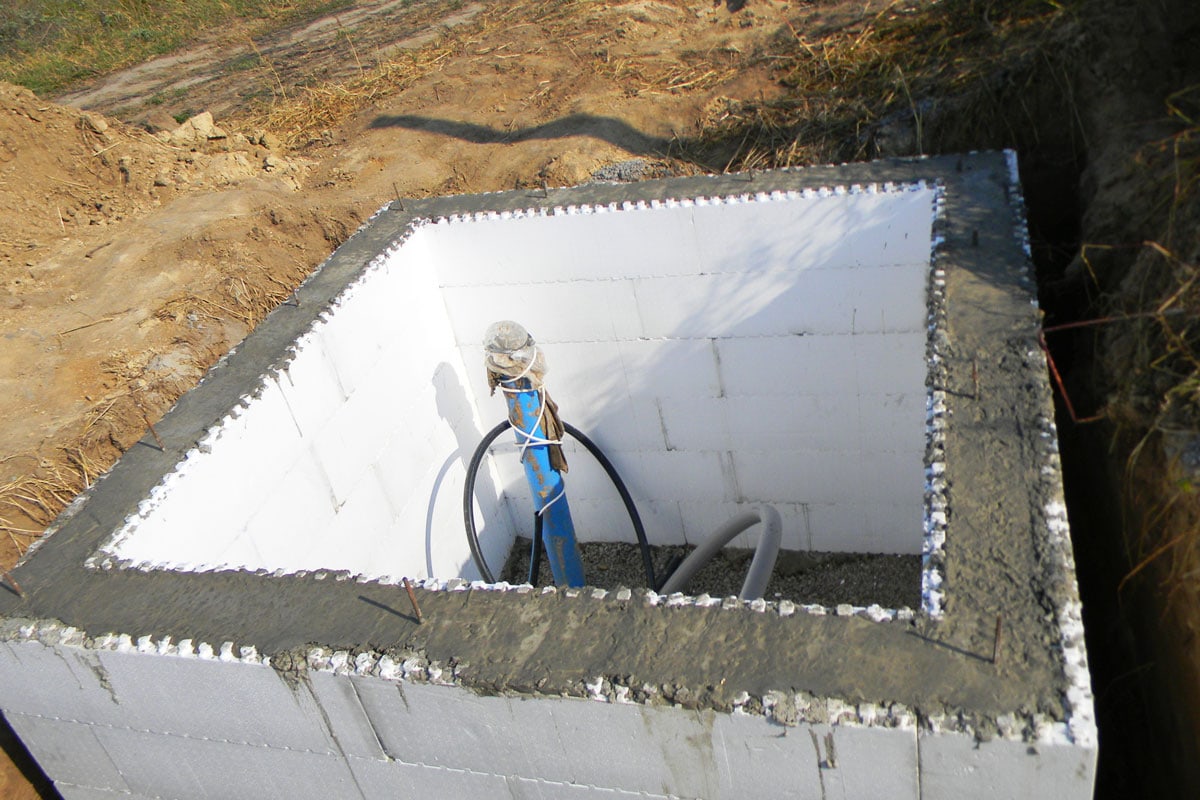
A well pump that is installed above the ground should be insulated to avoid freezing. You can use insulation blankets to keep it warm. You should also insulate the pressure gauge and the tiny tubes that connect it to the rest of the water system using insulation tape or a blanket.
Submersible well pumps may not need insulation because they are not susceptible to freezing. They even have the longest lifespan among the major types of water pumps.
Final Thoughts
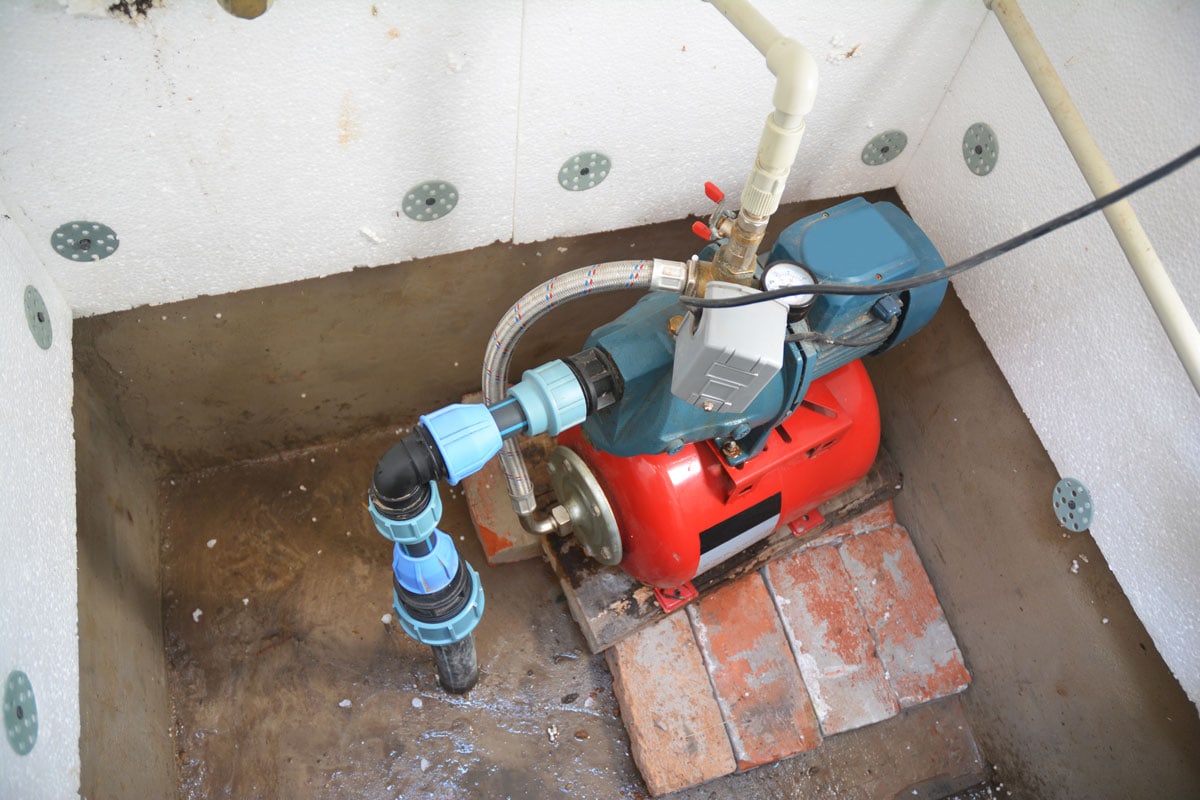
Insulating a well is easy, right? As you may have noticed, you just need enough appropriate insulation materials to keep all of the components warm in case you can't build a well house. It has always been easier this way than deal with frozen pipes later.


